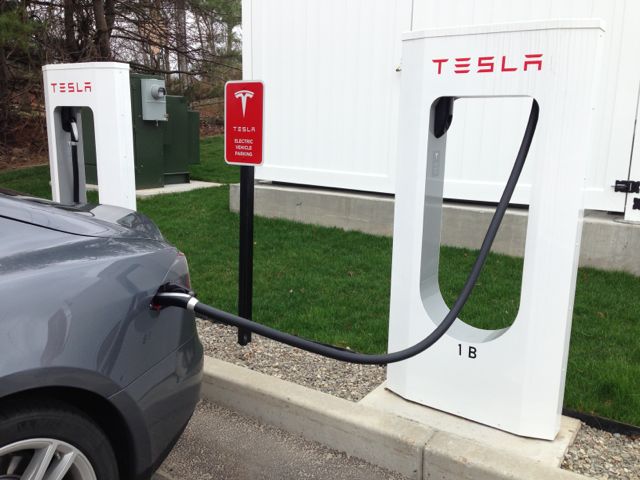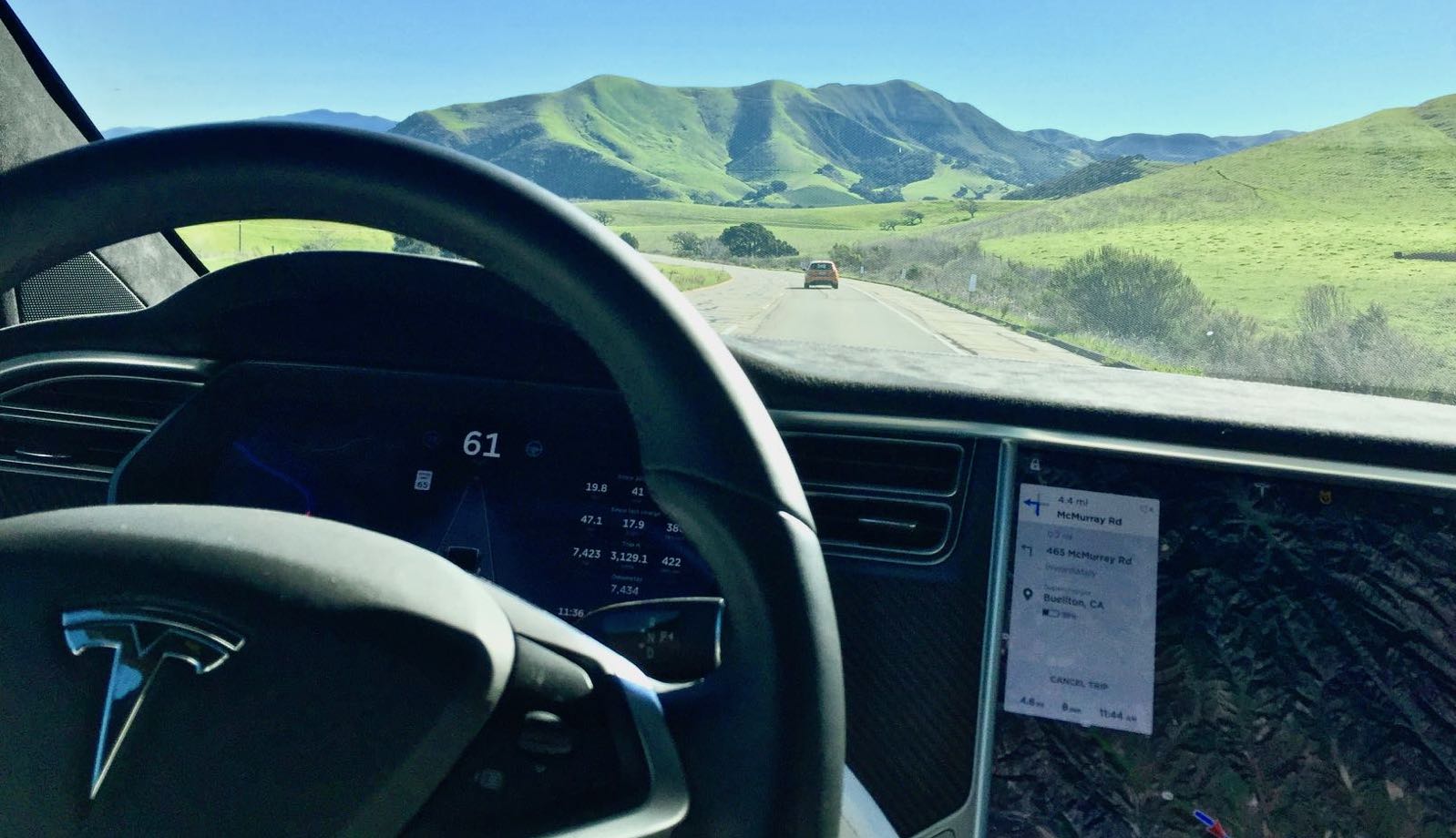
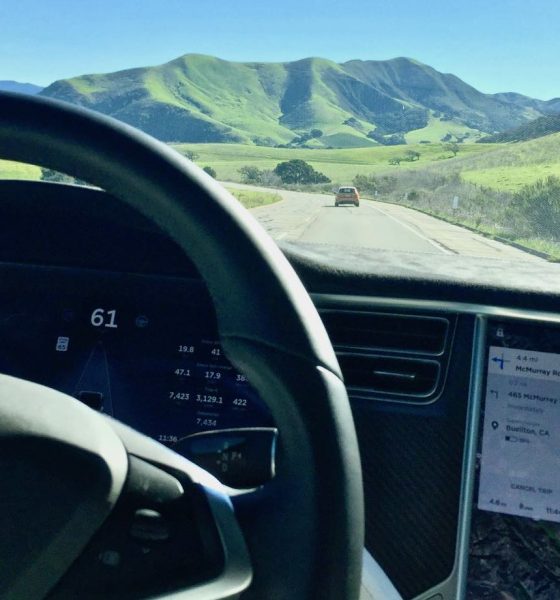
Lifestyle
A Guide to Planning a Tesla Road Trip
Prior to taking delivery of my Model S I was the guy who suffered from incessant thoughts of range anxiety, which soon disappeared as I grew into my ownership experience. I charge daily to 90% in my 85 kWh Model S and drive about 100 miles a day commuting, running errands, etc. I return home with about 140 miles of range left every day which is enough to do it all again without charging. There have been a few longer round trips where I did about 180 miles round trip, and one intentional (but not required) visit to a Supercharger, but none of my trips have required charging en-route or at the destination. As the end of summer approaches I intend on taking two Tesla road trips – one to New Jersey, about an hour east of NYC, and another road trip taking me one hour northeast of Pittsburgh. The New Jersey trip will be taking place this week hence it’s the subject this post. The Tesla road trip to PA will be the subject for of a future post.
Tesla Road Trip Planning
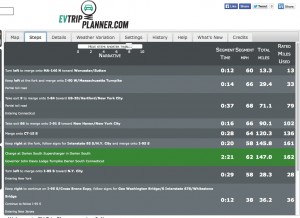 The first thing to consider is the overall distance of your road trip. With any trip, there are a few routes that one could take, and in my case it’s approximately a 244 mile journey to my destination. If I range charge, I’d have 265 miles of rated range which is merely a prediction of how far I could travel based on many assumptions. It’s not representative of the actual miles that can be driven. Rated miles do not take into account terrain, traffic, air conditioning, pit stops/detours etc. Using EVTripPlanner I determined that I’d likely need a charge along the way just so I can have a safety margin.
The first thing to consider is the overall distance of your road trip. With any trip, there are a few routes that one could take, and in my case it’s approximately a 244 mile journey to my destination. If I range charge, I’d have 265 miles of rated range which is merely a prediction of how far I could travel based on many assumptions. It’s not representative of the actual miles that can be driven. Rated miles do not take into account terrain, traffic, air conditioning, pit stops/detours etc. Using EVTripPlanner I determined that I’d likely need a charge along the way just so I can have a safety margin.
Assuming I leave with a 90% state of charge, I’ll need to charge after depleting 160-190 rated miles just so I can maintain a comfortable buffer. Experienced Tesla road trip veterans are probably much better at estimating the amount of buffer needed based on time of year and weather conditions.
RELATED:
- Top 5 Lessons from a First Tesla Road Trip
- Tesla Road Trip Battery Range Planning
- Reasons to Have a Tesla Tire Repair Kit and 2nd UMC
The next thing I researched are the number of Supercharger locations along my route. There are a many ways of doing this, so I’ll just mention two:
- Google maps – Enter your start and end addresses and then type “Supercharger” and have Google find Superchargers on the map along your route. Pick a good one (or more if needed) as waypoints.
- EVTripPlanner.com – This is a useful EV trip planning site put together by an enterprising 16 year old. Enter your start and destination addresses, select the type of car you’ll be using, and click the “Route through Superchargers” button. This will guide you to your destination through routes that have access to Tesla Superchargers. It’s not perfect and it can add more pit stops than needed so be sure to validate the results and adjust accordingly.
I used EVTripPlanner and found that while it wanted me to stop at both the Milford and Darien, Connecticut Superchargers, I technically would still have plenty of range and be able to skip Milford. From my home to the Darien Supercharger it’s 147 miles but EVTripPlanner estimates 161 rated miles needed. Considering we’re charged to 90% (240 miles), we’ll have plenty of buffer to fulfill the 1st leg at 147 miles.
How Much Charge Do I Need?
The rate of charge in an EV taper offs quickly as it approaches a 100% state of charge. This may add a significant amount of time to your charge. Also EVs charge faster from near empty than they do from half full. When you look at charge times and rates on Tesla’s site, those are generally based on ideal conditions assuming you’re using the latest Supercharger technology and you’re not splitting the charge with someone else that’s in the same Supercharger bank.
ALSO SEE: Top 5 Lessons Learned from a First Tesla Road Trip
In summary, I start with 240 rated miles on a 90% charge. I drive to the Darien Supercharger and use 161 rated miles. I have 79 miles of rated range left. Not enough to get me to my destination hence the reason for my stop. EVTripPlanner estimates 93 miles needed with no safety factor. Safety factors are generally added to standard (not rated) mileage. I need to add some safety factor so lets take the 2/3 approach. 93 x 3/2 = 140 miles of rated range needed to arrive at my destination. So I need to add 61 miles of rated range at the Supercharger to get to my destination and still have a good safety margin.
Tesla claims 170 miles of rated range added in 30 minutes, but as we’ve mentioned above they might be overly optimistic with this. Even so, planning for a 30 minute stop is very reasonable.
Destination Charging
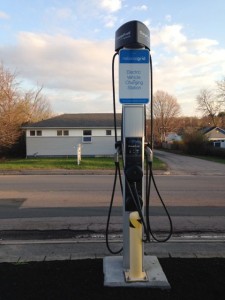 Unless you’ve “gifted” a charger setup to the people you’re visiting (several have done this), you’re likely to find some poor charging stations at the destination (if any at all). I’ve accepted the fact that the best charge I’ll probably get (at my destination) is from a 110V 15A plug that adds about three miles of rated range per hour.
Unless you’ve “gifted” a charger setup to the people you’re visiting (several have done this), you’re likely to find some poor charging stations at the destination (if any at all). I’ve accepted the fact that the best charge I’ll probably get (at my destination) is from a 110V 15A plug that adds about three miles of rated range per hour.
I’ll definitely poke around when I get there to see if I can find a better charging station / wall outlet, but nevertheless I need to plan for the worst. If I charge the minimum at the Supercharger to get to 140 miles of rated range, drive and use the estimated 102 miles of rated range i’ll arrive at my destination with 38 miles of rated range left. On the way home I need to go back the same route and I need that 140 miles of rated range for the distance plus safety. Oops — I can’t get home.
So I need to add 102 miles of rated range while i’m there. More if I plan on doing things with my car while I’m there like showing it off with test drives, going to dinner, etc. Lets say I need 50 miles to use while I’m there, plus the 140 to get back to the Supercharger. I need to add 152 miles of rated range. At a charge rate of 3 miles/hour, it’ll take approximately 51 hours of charging to regain 153 miles of rated range.
Options:
- Find a Supercharger near my destination – NJ only has one and its more than an hour away. No good.
- Find a faster charger nearby – A local college has a J1772 reported at 30A/240V which would give 18miles rated/hour added. But I’d have to leave my car there or sit there for the charge. Better, but not great.
- Charge more at my Supercharger stop on the way down and arrive with more left.
Charging up more at the Supercharger seems like it would be the best option. I’ll charge back up to 90% (240 rated miles), use 102 rated miles to get to my NJ destination and have 138 rated miles left. If I don’t go anywhere while there, that leaves me with plenty of charge to get back along with a safety margin. If I want to drive around while I’m there, I figured an additional 50 miles of charge will suffice which equates to 16 hours of charging (from a wall outlet) or two overnights. That’s doable.
Planning Complete
The return trip home should be pretty uneventful assuming I did all of my Tesla road trip planning correctly. One last thing to consider is detours along the way. On our way down to NJ we pass by a favorite Sushi place we like to visit in CT. The restaurant is a bit off route and will add a couple miles so I planned for this as well.
I also considered the unlikely scenario where the Darien, CT supercharger was offline when I arrived. What would I do? Fortunately there’s another one on the Northbound side of I-95 and then another only a few miles away on the Merritt parkway. Unlike MA and NJ, CT is pretty blessed with Superchargers!
This will be my first real EV road trip. Relative to the the epic 12,000 mile Tesla road trip taken by the Recargo folks, and many others that are happening daily, mine will be tiny but just as fun. As a new owner that still occasionally struggles with range anxiety, it has been an eye-opening experience having to think about options and and fall back plans – things I never once thought about in an ICE car. A Tesla road trip takes a little more planning. Thanks to the growing Supercharger network “filling up” my Tesla along the way is a minor inconvenience. Oh, and did I mention that using the Tesla Supercharger is free for life?
Tags: road trip, battery

Lifestyle
Tesla Model S Plaid battles China’s 1500 hp monster Nurburgring monster, with surprising results
There is just something about Tesla’s tuning and refinement that makes raw specs seem not as game-changing.

The Tesla Model S Plaid has been around for some time. Today, it is no longer the world’s quickest four-door electric sedan, nor is it the most powerful. As per a recent video from motoring YouTube channel Carwow, however, it seems like the Model S Plaid is still more than a match for some of its newer and more powerful rivals.
The monster from China
The Xiaomi SU7 Ultra is nothing short of a monster. Just like the Model S Plaid, it features three motors. It also has 1,548 hp and 1,770 Nm of torque. It’s All Wheel Drive and weighs a hefty 2,360 kg. The vehicle, which costs just about the equivalent of £55,000, has been recorded setting an insane 7:04.957 at the Nurburgring, surpassing the previous record held by the Porsche Taycan Turbo GT.
For all intents and purposes, the Model S Plaid looked outgunned in Carwow’s test. The Model S Plaid is no slouch with its three motors that produce 1,020 hp and 1,420 Nm of torque. It’s also a bit lighter at 2,190 kg despite its larger size. However, as the Carwow host pointed out, the Model S Plaid holds a 7:25.231 record in the Nurburgring. Compared to the Xiaomi SU7 Ultra’s record, the Model S Plaid’s lap time is notably slower.
Real-world tests
As could be seen in Carwow’s drag races, however, Tesla’s tech wizardry with the Model S Plaid is still hard to beat. The two vehicles competed in nine races, and the older Model S Plaid actually beat its newer, more powerful counterpart from China several times. At one point in the race, the Xiaomi SU7 Ultra hit its power limit due to its battery’s temperature, but the Model S Plaid was still going strong.
The Model S Plaid was first teased five years ago, in September 2020 during Tesla’s Battery Day. Since then, cars like the Lucid Air Sapphire and the Xiaomi SU7 Ultra have been released, surpassing its specs. But just like the Model Y ended up being the better all-rounder compared to the BYD Sealion 7 and the MG IM6, there is just something about Tesla’s tuning and refinement that makes raw specs seem not as game-changing.
Check out Carwow’s Model S Plaid vs Xiaomi SU7 drag race video below.
Lifestyle
500-mile test proves why Tesla Model Y still humiliates rivals in Europe
On paper, the BYD Sealion 7 and MG IM6 promised standout capabilities against the Model Y.

BYD is seeing a lot of momentum in Europe, so much so that mainstream media has taken every opportunity to argue that the Chinese automaker has beaten Tesla in the region. But while BYD sales this year in Europe are rising and Tesla’s registrations remain challenged, the raw capabilities of vehicles like the Model Y are difficult to deny.
This was highlighted in a 500-mile challenge by What Car? magazine, which showed that the new Tesla Model Y is more efficient, cheaper to run, and more reliable than rivals like the BYD Sealion 7, and even the nearly 400 KW-charging MG IM6.
Range and charging promises
On paper, the BYD Sealion 7 and MG IM6 promised standout capabilities against the Model Y. The Sealion 7 had more estimated range and the IM6 promised significantly faster charging. When faced with real-world conditions, however, it was still the Model Y that proved superior.
During the 500-mile test, the BYD nearly failed to reach a charging stop, arriving with less range than its display projected, as noted in a CarUp report. MG fared better, but its charging speeds never reached its promised nearly-400 kW charging speed. Tesla’s Model Y, by comparison, managed energy calculations precisely and arrived at each stop without issue.
Tesla leads in areas that matter
Charging times from 25% to 80% showed that the MG was the fastest at 17 minutes, while Tesla and BYD were close at 28 and 29 minutes, respectively. Overall efficiency and cost told a different story, however. The Model Y consumed 19.4 kWh per 100 km, compared to 22.2 for MG and 23.9 for BYD. Over the full trip, Tesla’s charging costs totaled just £82 thanks to its supercharger network, far below BYD’s £130 and MG’s £119.
What Car? Magazine’s testers concluded that despite BYD’s rapid sales growth and the MG IM6’s seriously impressive charging speeds, Tesla remains the more compelling real-world choice. The Model Y just offers stability, efficiency, and a proven charging infrastructure through its Supercharging network. And as per the magazine’s hosts, the Model Y is even the cheapest car to own among the three that were tested.
Watch What Car? Magazine’s 500-mile test in the video below.
Lifestyle
Tesla Cybertruck slapped with world’s least intimidating ticket, and it’s pure cringe
One cannot help but cringe and feel second-hand embarrassment at the idea of a person just driving around with a stack of these babies.

A Cybertruck parked at Stanford Shopping Center in California was recently hit with what might be the most try-hard piece of paper ever slipped under a wiper blade: a “fake citation” accusing the driver of supporting a “fascist car.”
The note, shared on X by Tesla staff program manager Ryan Torres, quickly made the rounds on X, where it quickly gained attention as an example of how not to protest.
The world’s least intimidating ticket
According to the citation, the supposed “violation” was “driving a fascist car.” The remedial action? Take the bus, call an Uber, or ride a bike. The note also dubbed Elon Musk a “chainsaw-wielding Nazi billionaire.” Now, protests against Tesla and Elon Musk have become commonplace this year, but one cannot help but cringe and feel second-hand embarrassment at the idea of a person just driving around with a stack of fake anti-Tesla/Musk citations.
Torres pointed out the irony himself in his post on X. Tesla currently employs over 140,000 Americans, and SpaceX has put the U.S. firmly back at the top of space technology. As Torres put it, maybe the person behind the world’s least intimidating ticket should “read a book on innovation before vandalizing” other people’s property.
Peak performative clownery
Not to mention that the fake ticket’s logic collapses under its own weight. EVs like the Cybertruck are literally designed to reduce emissions, not “destroy the economy.” If anything, Tesla has bolstered the United States’ economy by fueling jobs in engineering, manufacturing, and clean energy. It’s not the first time a Tesla has been the target of vandalism or politically charged notes, but this one stands out for sheer cringe value.
Torres summed it up neatly: “Peak clownery.” On that point, at least, the citation earns full marks. In a way, though, perhaps cringe fake tickets are not as bad as the literal firebombs that were being thrown at Tesla stores and cars earlier this year because some critics were gleefully misinformed about Elon Musk.
